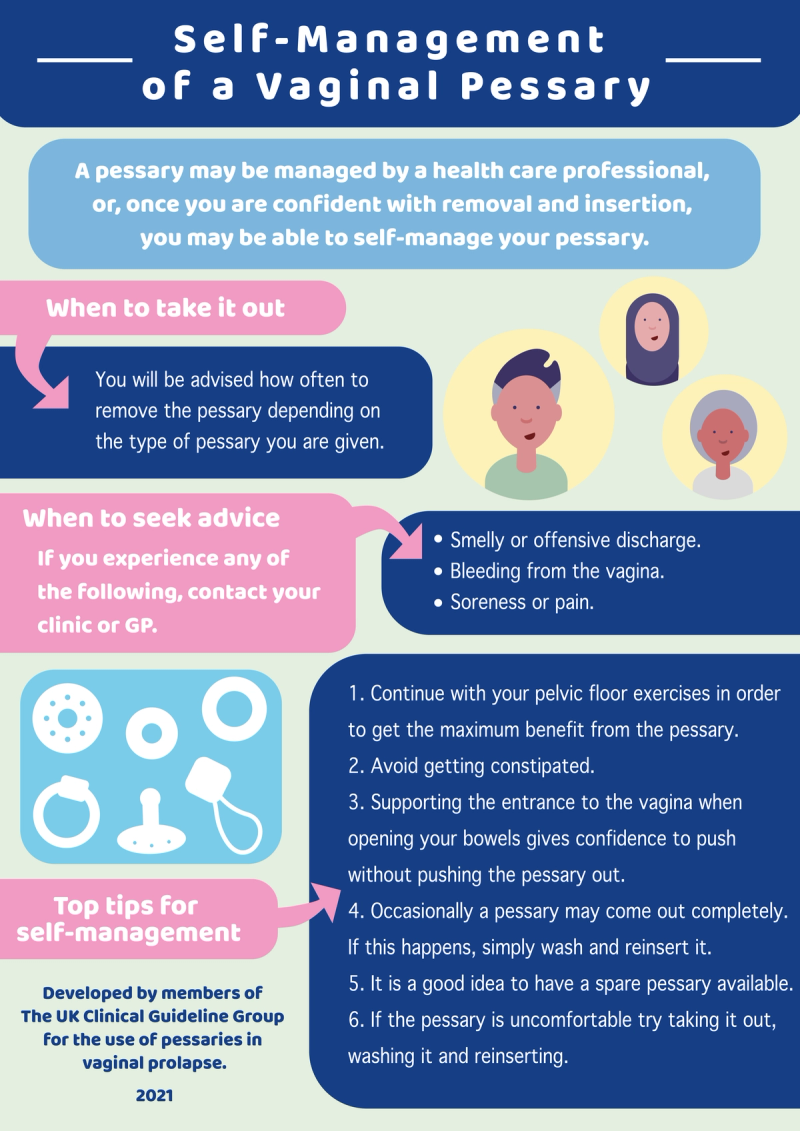Pessaries. The Facts.
Guest blog by Kate Lough, Chair, POGP
A pessary is a vaginal device made of flexible plastic or silicone. It’s a common choice for managing pelvic organ prolapse and acts like a tiny pop-up tent system for your vagina, offering support to the uterus and walls that have shifted downwards or ‘prolapsed’.
Lots of different types are available and they all do the same job, but some offer more support, some suit shorter or longer vaginas, and some can be used for self-management where you are in charge of when, why and what for.
The guidelines (NICE and UK Guideline) say that every woman who wants to, should be offered a pessary trial to see if it is the right prolapse treatment for her. Other options would be to do nothing/wait and see, pelvic floor muscle training, lifestyle changes or surgery.
If the pessary works and is a good comfortable fit, most women carry on with it until they want something different or get fed up going to the clinics. Self-managing your pessary can help with this, because you don’t need to go to the clinic very often. Once the right pessary for you has been fitted by the doctor, nurse or physio, you can get replacement pessaries on prescription for when you need a spare, or if your pessary starts to look a bit worn. Sometimes you might need to try a different size after a while, or a different type – prolapses can change over time and need different levels of support.
It is NOT TRUE that pessaries are only for ‘oldies’. Any woman can have a pessary. Some older women choose a pessary because they might not be suitable for an operation, and they want to feel better rather than ‘be cured’. But recently so much has changed. Operations for prolapse are being done much less often, older women are much fitter than they used to be, and the truth is that no treatment for prolapse is perfect. Operations may need to be redone, or don’t work fully; a suitable pessary may not be found, or may be uncomfortable; and pelvic floor exercises are hard to keep up with. But trying a pessary still leaves all the other options open and it might be just what you are after.
It is NOT TRUE that pessaries mean you can’t have sex. It is still possible if the pessary you have doesn’t fill the vaginal space but instead sits against the vaginal wall, leaving room for a penis or something else to penetrate. If you are self-managing, you can take the pessary out for sex, and replace it when you need it back in. If you have a space filling type of pessary, and it is too hard to self-manage (they can be fiddly and sometimes you need nimble fingers) penetrative sex can be too difficult. The pessary doesn’t affect sexual pleasure in other ways though. You need to be clear with the healthcare professional who is fitting your pessary that you want to be sexually active so you get the right pessary for you.
Pessaries are not perfect and you may occasionally have some discomfort, bleeding, falling out and sometimes bladder and bowel issues but these can usually be sorted. You can use a pessary for as long as you like if it’s right for you.
For an in depth guide to vaginal pessaries, check out the new UK guidelines for patients and clinicians here.
Listen to the podcast and follow @whymumsdontjump on Instagram.



